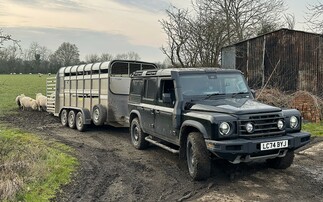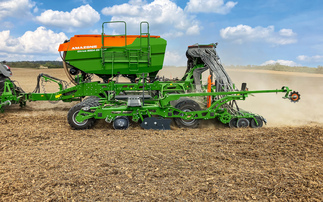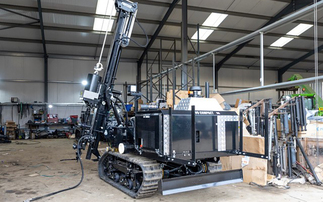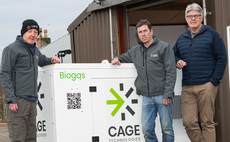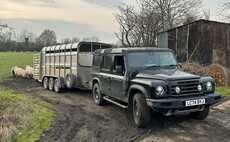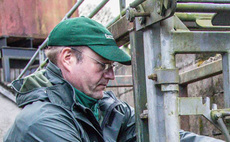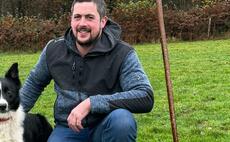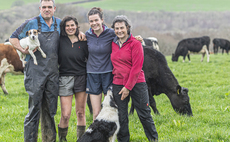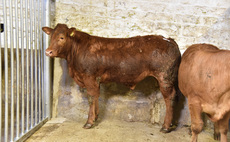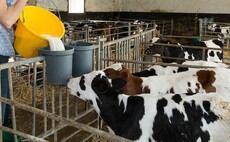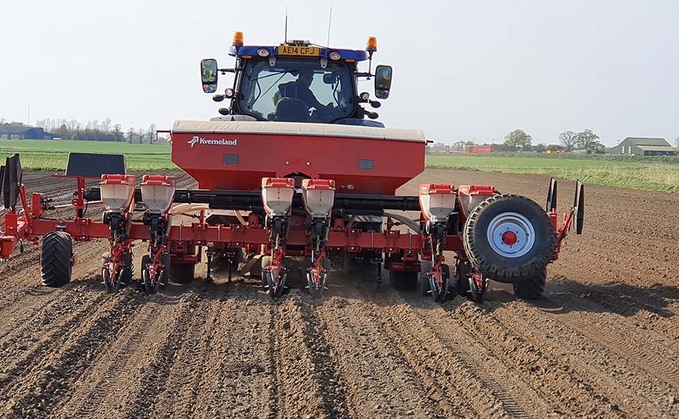
As precision drills become more adaptable, one Cambridgeshire grower is taking technology and a bespoke adaption of its seeder into new territory. Jane Carley reports.
With a wide range of crops requiring precision planting, Freshfields Farm near Ramsey Forty Foot in Cambridgeshire, was looking for a more modern replacement for a 37 year-old Accord Optima seeder.
Robert Stacey, business partner, explains: "There is a number of seeders which can work at different row widths for our varied cropping, using a telescoping frame, but not with the option to fit 12 seeding units for sugar beet. As such, I was faced with buying one seeder for pumpkins, squash and sweetcorn and a separate drill for sugar beet. I was also interested in updating fertiliser application to improve on our existing system, which used a front mounted hopper on the tractor to blow back to the seeder."
A conversation with Kverneland's drill specialist Graham Owen at local dealer Thurlow Nunn Standen's open day in the autumn of 2019 brought up the possibility of a machine that was an evolution from its existing seeder, as the Kverneland group now owns Accord.
"He explained that Kverneland had 12-row Optima RS seeders working in Russia which can be adjusted to suit different row widths in various configurations and can be fitted with a choice of sowing units," recalls Mr Stacey.
Pumpkins are grown in a three-bed system, so in time for the 2020 season, Kverneland designed a bespoke version of the Optima RS that uses a hydraulic lift system to ease removal of units when they are not required, previously a time-consuming task.
Time is at a premium in the spring, as Freshfields Farm grows 38ha of sugar beet, 45ha of sweetcorn, 25ha of pumpkins and 10ha of squash, marketed through wholesalers and to Lidl's buying group, as well as 120ha of wheat, 40ha of spring barley and 25ha of peas, mainly on skirt fen.
In conventional 12-row guise, the Optima RS, the first of its kind in this country, is used for sugar beet at 450mm row spacings; but for pumpkins, sweetcorn and squashes, six of the HD-II seeding units are removed, allowing it to sow pairs of rows within the 1,570mm centre bed system.
"We prepare the land in January and February before planting in April, and the ability to easily change row widths is invaluable. Sweetcorn is planted to give harvest dates so that we can send it market from July right through to October, for example. We can now start the day drilling sugar beet and within two to three hours swap the Optima around to plant another crop later on."
Fertiliser is carried in a 2,000 litre hopper on the Optima RS frame, further increasing operational flexibility, and placed below and to the side of the seed using a double disc fertiliser coulter.
"It was a difficult job to remove the pipework from the fertiliser hopper on the previous drill, but more significantly, by placing the base fertiliser precisely the seed can make better use of the nutrients, so we are using a third of the previous rate on sugar beet," Mr Stacey says.
Nitrogen is applied through electrically-driven micro-granule hoppers fitted as a ‘backpack' for each sowing unit, electrically driven and IsoBus-controlled. "With the increased precision of nitrogen application we have been able to cut rates to a ninth of the usual rate, so we are saving considerably on fertiliser costs," he adds.
When used in six-row format for pumpkins with every other unit lifted out of work, Kverneland's Geoseed level 2 RTK GPS precision seeding control offers a diamond seed pattern at 900mm seed spacings down the row.
This allows an RTK-guided mechanical weeder to run through the crop, for which there are few viable herbicide options, both along and across the rows. "We can hoe in four different directions, and there is minimal need to hand weed, which makes a considerable saving on time and labour," Mr Stacey says.
The diamond pattern is a set up so that it can also be used for sugar beet, points out the manufacturer, enhancing crop flow at harvest and improving light interception for the developing crop.
Freshfields Farm's Optima RS also did duty on a few sunflowers last year, grown alongside an increasingly popular ‘pick-your-own' outlet for pumpkins. He comments that he has found the Optima easy to adjust for different seeding depths, via a handle on the toolbar and accurate across his range of crops.
"We use specific singling discs and Kverneland's Don Campbell has helped us fine tune the drill for different seeds, although it was a definite advantage having the previous Optima. The disc that was intended for sweetcorn was actually designed for maize, but sweetcorn is a smaller seed, so we needed to find an alternative."
The RS is fitted with the HD-II seeding units which are heavier in weight and can have up to 100kg additional pressure applied onto each individual coulter via a spring-loaded weight transfer system for improved penetration in hard conditions.
"Lateral depth control using open gauge wheels offers contour following. A small coulter forms a clean furrow, before light re-compaction and seed covering is carried out by the intermediate press wheel and an adjustable V-press wheel, to ensure maximum field emergence," says Mr Stacey.
"The units handle trash well, and last spring when it dried up so quickly we found the disc particularly useful in dry conditions to get into the ground, compared to the coulters we used before."
Operation is via Kverneland's Tellus terminal, using the tractor's GPS signal, and Mr Stacey says that operator Jordan Abblitt has got on well with it from the start, although Kverneland has always been on hand for any queries.
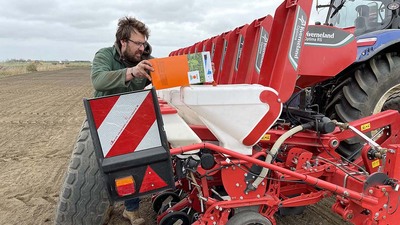
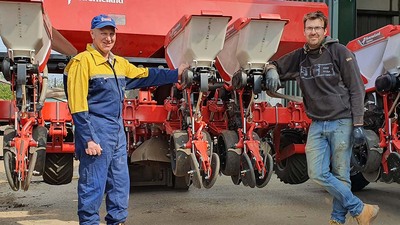
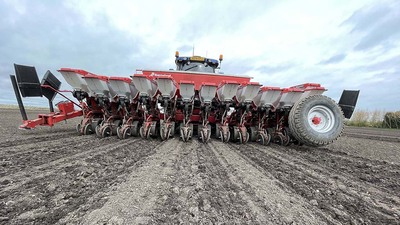

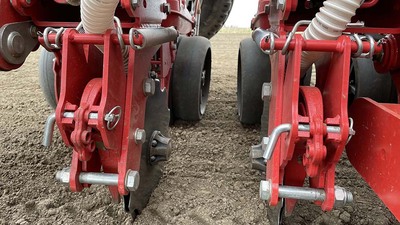
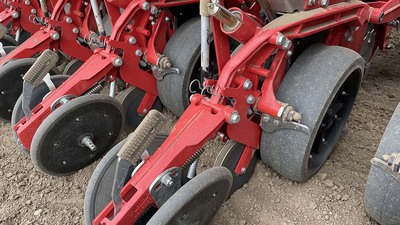
Verdict
Outputs in 12-row sugar beet configuration are about 40ha/day, and with the capacity offering opportunities for contracting, Mr Stacey has already had enquiries to drill into cover crops.
"It is a heavier drill due to the discs, and although we had sufficient tractor power, you do notice the difference, so we have put wider tyres on the tractor. The previous drill was very reliable; apart from new coulters it just had three or four belts in all the time we were using it and is still in use on my daughter and her partner's farm, which gives us confidence in this model."
He adds: "There are certainly cheaper sugar beet drills on the market, but this allows us to establish our range of crops with one seeder. We are also making significant savings on fertiliser, which cuts our carbon footprint."














